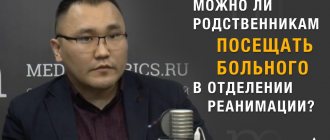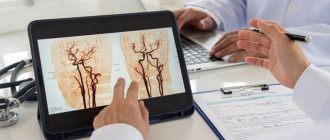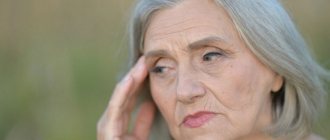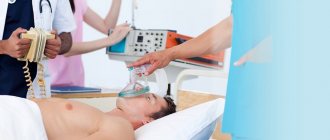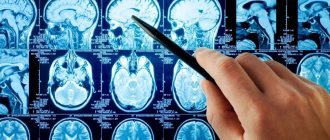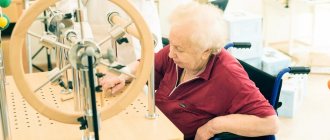- How stroke is related to age and gender
- Controllable risk factors
- What blood pressure can lead to stroke
- Monitoring heart function
- Maintaining normal sugar levels
- Controlling cholesterol levels
- Rejection of bad habits
- Maintaining a Healthy Body Weight
Stroke is otherwise called acute cerebral insufficiency or cerebrovascular accident (CVA).
Depending on the type of disease, ischemic and hemorrhagic stroke are distinguished. In the first case, the cause of the pathology is a blood clot that has blocked the vessel. In the second, there is damage to the vascular wall, which causes bleeding in the brain. In developed countries, strokes are the second leading cause of death. The difficulty for the patient and his relatives is rehabilitation, which takes a long time and requires considerable physical and moral strength.
That is why you need to think about how to prevent a brain stroke and maintain your health. What factors can lead to vascular accident, and how can they be controlled?
How stroke is related to age and gender
Doctors divide risk factors for stroke into controllable and uncontrollable. Among the uncontrollable are gender, age, heredity.
Previously, acute cerebrovascular accident was diagnosed in elderly people over 60 years of age. Due to physiological changes in the body, the risk of vascular pathology in adulthood increases.
Until recently, the proportion of young and middle-aged stroke patients was extremely small. Now, according to statistics, a third of acute stroke cases occur in people aged 20 to 60 years. Rejuvenation of strokes is a trend that doctors associate with the acceleration of the pace of life of the modern generation. This increases the amount of stress and contributes to psycho-emotional overload, which, combined with a lack of physical activity, negatively affects health.
In young and middle age, men are more susceptible to strokes than women, and after 50 years, gender loses its significance. Among elderly patients who have suffered a crisis, the number of men and women is approximately equal. Doctors associate the tendency of the young male population to strokes with bad habits, stress, and neglectful attitude towards their health.
Heredity is another factor that cannot be controlled, but must be taken into account. If your close relatives have cardiovascular diseases, it is recommended to pay more attention to your own health and undergo regular preventive examinations.
Save yourself from a stroke. Is it possible to avoid a blow and what to do if it happens?
Stroke - an acute disorder of cerebral circulation - is one of the most formidable ailments that overnight turns a healthy person into a frail disabled person. Every year in Russia, more than 500 thousand residents suffer acute cerebrovascular accident (stroke). 50% of them die, 70% of survivors become disabled. What do you need to know to avoid joining their ranks? Deputy Director of the Scientific Center for Neurology, Professor Marine Tanashyan, tells the story . Is it possible to cause a stroke? The notorious former TV journalist admitted that he had a “board of honor” hanging above his desk, on which he noted people who had a stroke after an interview with him.
— Stress, especially long-term, chronic stress, is one of the main provocateurs of stroke. During traumatic situations, there is a jump in blood pressure and the release of the stress hormone (cortisol), which can cause a brain catastrophe. However, it is impossible to cause a healthy person to have a stroke. There is always a “mediator” between stress and stroke. Most often this is arterial hypertension (constant pressure is usually above 120/80), atherosclerotic plaques on the walls of blood vessels (which creates a condition dangerous for stroke - narrowing of the lumen of the arteries supplying the brain) and atrial fibrillation (in which blood clots form in the atrium - Any of them can “shoot” in the head). For acute stress to result in a stroke, the presence of one of the factors is sufficient. If all three are combined, a stroke can occur even in a calm state. Why does the blow happen suddenly? Recently, a plane with 400 passengers made an emergency landing - the pilot of the aircraft suffered a stroke.
Why didn’t the doctors notice anything during the mandatory pre-flight examination of the crew? Global statistics are as follows: the cause of up to 40% of strokes remains unclear. Especially often, “young strokes” (under 45 years of age) become a mystery. They arise due to rare causes - blood diseases, dissection and pathology of the vessels supplying the brain, in which pressure drops during takeoff and landing can be critical. It is impossible to identify them during preventive screening; this requires in-depth specialized research. However, such reasons are the exception rather than the rule. Usually, doctors easily identify their potential patients during preventive examinations. Narrowing of the lumens of the arteries supplying the brain is shown by ultrasound of the brain vessels, high cholesterol (the cause of the appearance of atherosclerotic plaques) and blood sugar levels will be revealed by a finger prick blood test, persistent hypertension - regular monitoring of blood pressure. The suddenness of a stroke is also often a myth. Despite all the rapidity, the disease often sends “notifications” that patients either do not notice or ignore. Neurologists warn: in no case should you ignore sudden causeless dizziness, memory loss, numbness of a part of the face or body, difficulty speaking (even if it lasted several minutes), intolerance to bright light or loud sounds. These are classic signs of a transient ischemic attack, which in most cases quickly develops into a major stroke. Excessive patience and hard work with such symptoms can cost your life. A severe, sudden headache should not be tolerated under any circumstances. Most of those whose strokes were caught at an early stage were those who went to the doctor because of an unbearable headache. The blow is often inherited. Therefore, people whose close relatives (parents, brothers, sisters) suffered a stroke before the age of 60 should be especially attentive to such symptoms. What rules will help avoid a stroke? There is no such thing as a zero risk of stroke. It can occur in anyone. However, 3 out of 4 strokes are preventable. Moreover, you don’t need to make a lot of effort for this.
- Physical activity reduces the risk of stroke by 15-20%.
- The absence of bad habits (in the case of a stroke, smoking is the most harmful) reduces the likelihood of a brain catastrophe by 20%.
- If a person controls blood pressure, heart rate, cholesterol and blood sugar levels, the likelihood of a stroke is reduced by 50%.
What to do if you get hit? Surveys show: 80% of people know what a stroke is, 50% know the symptoms, but only 20% are aware of what to do if they occur. Only 3 out of 10 patients call an ambulance. The rest prefer to lie down and wait for it to go away on its own. However, a stroke is an emergency condition in which the most effective treatment is possible within the first 3-5 hours. Therefore, you need to immediately call emergency help, warning the dispatcher that it is a suspected stroke.
Article from the newspaper: Weekly “Arguments and Facts” No. 6 02/07/2018
What blood pressure can lead to stroke
Hypertension is the very first cause of vascular accidents. With blood pressure above 160/90, the risk of stroke increases fourfold. If blood pressure reaches 200/110 or higher, the likelihood of a stroke increases 10 times. You can control your blood pressure at home using a tonometer. Don't neglect this simple safety measure. Even if you feel well, you may find that your blood pressure is elevated. It is necessary to understand that high blood pressure can be not only an independent disease, but also a symptom of pathology of other organs and systems. This form of hypertension is called secondary. It often affects people with diabetes, kidney disease, and endocrine disorders.
In addition, there is so-called essential (primary) hypertension. Its difference from secondary hypertension is that there are no disorders in the body that could cause an increase in pressure. To identify the exact cause of high blood pressure, you should consult a doctor.
Treatment of any form of hypertension begins with optimizing nutrition and normalizing the daily routine. In order for blood pressure to remain normal, it is necessary to avoid excessive consumption of salt, caffeine, and alcohol. You should avoid physical and emotional overload and devote enough time to rest.
Chronically high blood pressure is treated with medication. The doctor selects a combination of drugs and their dosage.
How does this affect you?
These examples are absolutely real. We didn't bring them here to scare you. And so that you:
- knew the signs of a stroke in order to help themselves and those around them. IMPACT Rule:
U - Smile. Ask the person to smile. A crooked, asymmetrical smile is one of the signs of a stroke. D – Movement. Ask to raise both arms or both legs up at the same time - during a stroke, one of the limbs rises more slowly and lower. A – Articulation. Ask to pronounce the word “articulation” or several phrases - if diction is impaired, speech is sluggish or sounds strange - this is a sign of a stroke. R – Solution. If you find violations in at least one of the points (compared to the normal state), call an ambulance. Tell the dispatcher what signs of a stroke (STROKE) you have found, and a special resuscitation team will arrive. The time factor plays a decisive role.
- We knew and were able to avoid risk factors: hypertension, diabetes. Alcohol and smoking were avoided. They knew how to deal with stress, avoided physical overexertion and detected heart disease in a timely manner.
- We were engaged in prevention. We regularly took tests - blood cholesterol is important here; They did an ECG, visited a neurologist and cardiologist, and monitored blood pressure. If you have diabetes, it was monitored and treated.
Maintaining normal sugar levels
Glucose is necessary for organs and tissues, but its excess content in the blood is fraught with negative consequences for the health of the vascular system. Studies have shown that with diabetes, the risk of stroke increases three to five times, and the disease is characterized by a more acute course and a larger scale of damage. Elevated blood glucose levels have a bad effect on the health of small vessels, leading to poor circulation and damage to the vascular walls. This condition is called diabetic angiopathy.
Diabetics are also susceptible to early development of atherosclerosis: with diabetes, its symptoms are diagnosed 10-12 years earlier than in people without diabetes. Atherosclerosis affects the carotid and vertebral arteries, leading to narrowing of the lumen of blood vessels and impaired blood flow.
To prevent strokes, it is important to regularly monitor glucose levels and avoid overusing foods with large amounts of fast carbohydrates and fat. If a patient is diagnosed with diabetes, it is necessary to adhere to the doctor's recommendations for taking medications and nutrition. Modern medications allow you to keep sugar under control and thereby avoid the negative effects of hyperglycemia on health.
Controlling cholesterol levels
Excess cholesterol leads to atherosclerosis, which affects the blood vessels of the brain. In their lumen, atheromatous (atherosclerotic) plaques form, due to which blood cannot circulate normally. In severe cases, this leads to blockage of the vessel by a blood clot or rupture, that is, hemorrhage in the brain. The development of atherosclerosis is promoted by smoking, alcohol abuse, and a diet with a predominance of foods containing large amounts of animal fat and trans fats. With diabetes mellitus, excess body weight, immobility, hormonal pathologies, which are accompanied by lipid metabolism disorders, the risk of developing the disease increases many times over.
Atherosclerosis in many cases does not manifest itself externally. Negative symptoms occur when an atherosclerotic plaque has more than half blocked the lumen of the vessel. If the vessels of the brain are affected, this is manifested by emotional lability, deterioration of sleep, decreased memory and attention.
The disease in its early stages can only be determined through medical research. People over 40 years of age, including patients without heart or other pathologies, should be tested for total cholesterol and low-density lipoproteins (LDL) for preventive purposes. We are talking about a lipidogram - a special biochemical blood test. Total cholesterol levels should not exceed 5.7 mmol/l, and LDL levels should be within 1.8 mmol/l.
If there are signs of vascular damage, the doctor additionally prescribes hardware diagnostics: X-ray examination, ultrasound.
Conservative treatment of atherosclerosis involves taking medications to lower cholesterol and prevent blood clots, as well as changing your diet. In severe cases, when a serious blood flow disorder is established, the patient is recommended to undergo surgery.
Rejection of bad habits
Alcohol abuse and smoking increase the risk of stroke by three to four times. Smokers have increased stress on the walls of blood vessels, which is caused by exposure to nicotine. Tobacco users are more likely to suffer from hypertension, heart failure and other pathologies that increase the risk of stroke.
Alcoholic drinks destroy the walls of blood vessels. They become more brittle. Drinkers have an increased risk of hemorrhagic stroke, which involves bleeding in the brain. Alcohol abuse also negatively affects the state of platelets. This can lead to the formation of blood clots and blockage of blood vessels in the brain. Tissues stop receiving oxygen, which leads to their death.
Scientists have found that daily consumption of three or more glasses of drinks with a high content of ethyl alcohol contributes to the development of stroke at a younger age. For people who drink, their first stroke most often occurs between the ages of 50 and 60. This is due to premature degenerative changes in vascular tissues caused by exposure to alcohol. In patients without alcohol dependence, vascular accidents mostly occur at the age of 70-75 years.
Like smokers, drinkers often suffer from hypertension, which is the biggest risk factor for stroke.
Giving up bad habits will significantly reduce the load on the cardiovascular system and increase the effectiveness of treatment.
Correct stroke prevention
11.03.2019
10461
0
Several million people die from stroke every year. To avoid being one of them, follow simple rules.
The cause of a stroke is a violation of blood circulation in the brain. Due to lack of nutrition, damage to part of the brain and blockage of blood vessels occurs. As a result, hemorrhage and death of brain tissue occurs.
Depending on the damage to blood vessels, stroke is divided into two types:
- hemorrhagic stroke occurs due to rupture of a vessel and subsequent hemorrhage;
- Ischemic stroke is characterized by blockage of blood vessels in the brain, which can also result in cerebral hemorrhage.
Causes
Stroke, after heart disease and cancer, is the leading cause of death in the world. The common age is 40-60 years. What reasons can lead to a vessel rupture or blockage?
The main reasons leading to severe consequences include:
- high pressure;
- atherosclerosis;
- cardiovascular diseases.
Impaired lipid metabolism in diabetes mellitus leads to the formation of cholesterol plaques, which increases the risk of stroke. Alcohol, smoking, excess body weight, age are also risk factors.
To avoid this terrible disease, it is necessary to carry out disease prevention. Timely prevention of stroke reduces the risk of its occurrence several times.
Prevention is divided into primary and secondary:
- Primary prevention of stroke is aimed at preventing the occurrence of the disease;
- The main goal of secondary prevention is to prevent recurrent stroke.
Primary prevention of stroke
Arterial pressure
High blood pressure is one of the main reasons leading to rupture of blood vessels. To prevent disease, it is necessary to reduce blood pressure. High blood pressure can be caused by blood viscosity, high cholesterol, excess weight, kidney problems, diabetes, stress, and poor diet.
It is necessary to exclude coffee, strong tea, fatty and smoked foods from the diet, and drink more clean water. Control your weight and exercise. If hypertension is caused by certain diseases, constant medical supervision is required.
If you have high blood pressure, you should immediately take antihypertensive medications. Constantly elevated blood pressure of just a few millimeters increases the risk of stroke by thirty percent.
Blood cholesterol level
Stroke prevention includes constant monitoring of blood cholesterol levels. It must be checked once a year - after twenty years, and once every six months - after forty.
“Excess” cholesterol is deposited on the walls of blood vessels in the form of plaques, gradually narrowing the diameter of the vessel and thereby increasing the risk of its rupture. If your cholesterol level is higher than normal, you should reduce your intake of fatty foods, such as fatty meats, refined oil and butter.
Fresh fruits help convert cholesterol into cholesterol, which is completely absorbed by the body. Your daily diet should include foods that help lower cholesterol.
Oatmeal, almonds, corn, bran, and all legumes will cope with this task perfectly.
Proper nutrition is the key to success
Proper nutrition is the basis without which stroke prevention is impossible. Reducing sodium (salt) significantly reduces the possibility of disease.
- the optimal amount of salt per day is no more than five grams; it is also necessary to minimize the consumption of processed foods: canned fish and meat, ketchup, sausages and other smoked products;
- foods rich in magnesium, potassium, and fiber should be constantly included in the diet: a lack of potassium in the body can cause a stroke;
- fresh vegetables and fruits are a source of antioxidants that prevent the appearance of plaques and the development of atherosclerosis;
- Cereals, lean meat and fish, seafood, dairy products are the main elements for successful stroke prevention.
Excess weight is a path to stroke
Excess body weight doubles the likelihood of high blood pressure, which leads to cardiovascular disease and stroke. The amount of cholesterol in the blood directly depends on body weight.
In people with diabetes, excess weight can trigger the development of type 2 diabetes, in which sugar levels are not controlled by the body.
Uncontrolled type 2 diabetes is the cause of stroke. Stroke prevention makes no sense without losing extra pounds.
Exercise stress
Regular physical activity is the main prevention of stroke. Regular exercise helps keep the body in good shape, saturates it with oxygen, improves blood supply to the heart muscle, and significantly reduces blood pressure.
Physical activity reduces blood sugar and cholesterol levels and has a positive effect on carbohydrate and fat metabolism.
Physical activity depends on the age and condition of the body. You can start training at any age. Swimming, running, gymnastics, and ordinary walking are suitable. If you have any illness, you should definitely consult your doctor.
Cardiovascular diseases require more gentle exercise, so aerobics and running are contraindicated and even dangerous, as they can, on the contrary, cause a stroke.
Bad habits
Smoking is not only a risk factor, but also doubles it. Among people who have had a stroke, there are twice as many smokers as non-smokers. The risk begins to decrease immediately after quitting smoking, and after five years it becomes the same as for non-smokers.
Alcohol in large quantities also leads to stroke. Everything is good in moderation. No more than a glass of beer or dry red wine every day is a good way to prevent stroke.
It is necessary to stop the abuse of alcohol and cigarettes and lead as healthy a lifestyle as possible. add fresh vegetables to your diet, for example.
Timely examination
The presence of cardiovascular diseases increases the risk of stroke. Therefore, the prevention of stroke and heart attack must necessarily include regular laboratory and instrumental examinations.
Once every six months, a chemical blood test, ECG, ultrasound of blood vessels, and MRI of the brain are required. It is also necessary to take vascular medications.
To prevent stroke, vascular medications can be taken in courses 2-3 times a year.
Prevention of recurrent stroke
Medications
After suffering a stroke, the risk of another stroke increases tenfold, so preventing another stroke becomes vital. It begins to be carried out in the hospital, in parallel with the treatment of the stroke itself.
At first, the main priority is to saturate the blood with oxygen, improve blood supply, restore and control blood pressure.
After a stroke, it is impossible to restore dead nerve cells, so medications for stroke prevention are aimed at treating the consequences of a stroke and preventing another.
These may include antidepressants to relieve post-stroke depression, anticonvulsants to stop seizures, and muscle relaxants to relieve muscle tension.
Anticoagulants and antiplatelet agents are the main drugs for preventing recurrent stroke. Particular attention should be paid to concomitant and chronic diseases. Their aggravation is extremely undesirable.
Preventive medications play an important role. These include vitamins to restore the immune system, nootropic drugs that increase the stability of the brain when there is a lack of oxygen. The main actions of nootropics also include restoring attention and memory.
Non-drug treatment
In addition to drug treatment, prevention after a stroke must necessarily include physical therapy, physiotherapy, and massage. It is very important to exclude the occurrence of stressful situations during the rehabilitation period and limit the load as much as possible.
Strictly give up smoking and alcohol, and take medications prescribed by your doctor accurately and regularly.
A set of these measures aimed at eliminating all risk factors and recurrence of stroke requires strict adherence from a person. This is the only way to avoid a second stroke and return to a full life.
Maintaining a Healthy Body Weight
Excessive accumulation of fat deposits, especially in the abdominal area, increases the risk of stroke. People who are overweight are more likely to have type 2 diabetes and other diseases that cause complications on the heart and blood vessels. Also, people of heavy build are more likely to suffer from high blood pressure. All these factors together create a risk of stroke.
To maintain a healthy weight, you need to monitor your diet, control your hormonal levels, and ensure adequate physical activity. The most beneficial for blood vessels are aerobic exercises. These are walking, race walking, cycling, swimming.
Women taking hormonal contraceptives should be especially attentive to their health. Such drugs increase appetite, and if the dosage is incorrectly selected, the risk of vascular damage increases.
